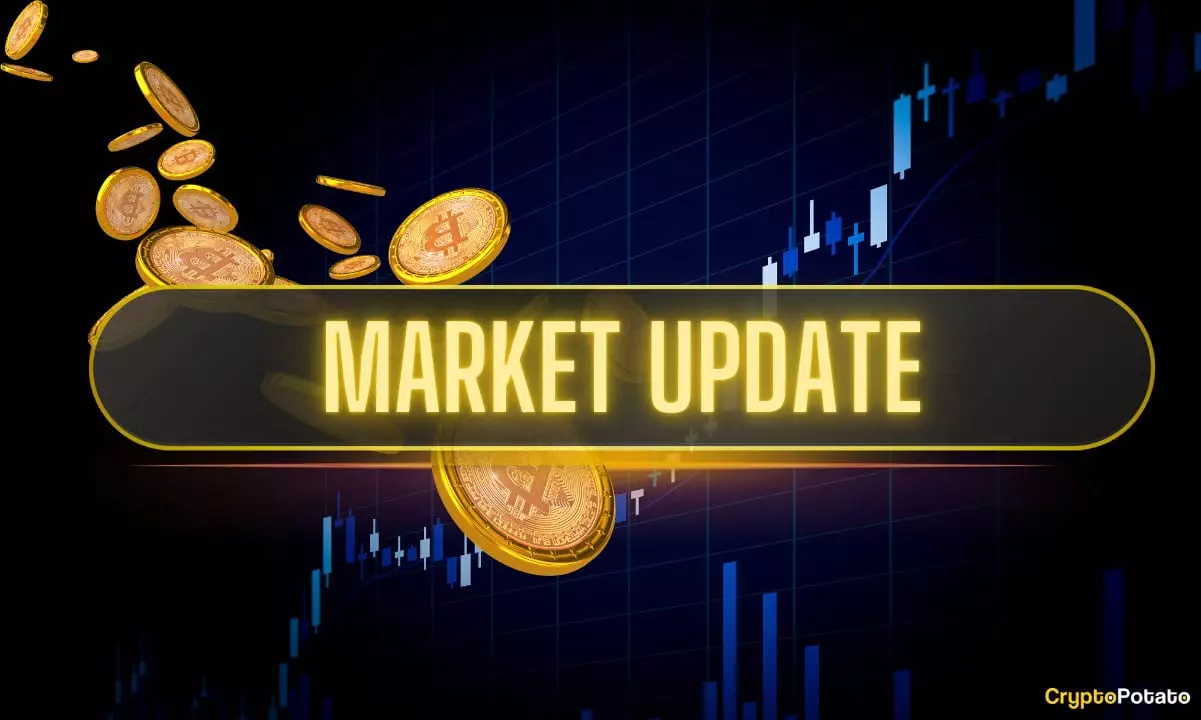This past week, a series of geopolitical events unfolded with an intensity that could make anyone gasp. The stakes escalated dramatically when Israel launched a missile strike against Iran, resulting in a shocking death toll of over 70 individuals, including high-ranking military officials and nuclear scientists. With tensions flaring, the immediate reaction in the cryptocurrency market was a dramatic plunge in Bitcoin’s price, which skidded from over $108,000 to below $103,000 almost instantly. This single incident illuminated just how vulnerable cryptocurrencies, particularly Bitcoin, are to external shocks.
While many investors might initially view this as a set-back, such volatility also underlines the dynamic nature of the crypto market. It exposes both the fragility and the resilience of Bitcoin amidst global chaos. The subsequent days saw a tit-for-tat escalation, leading to heightened anxiety among traders. Yet, amidst the uncertainty, Bitcoin demonstrated astonishing tenacity. As the dust settled from the missile attack and its fallout, Bitcoin staged a modest but discernible recovery—bouncing back to around $104,000 by week’s end.
Market Sentiment and Fed Influence
As the week progressed, investor attention shifted toward the U.S. Federal Reserve, which concluded its FOMC meeting without altering interest rates—the anticipated outcome. Herein lies a fascinating paradox: while the macroeconomic environment is fraught with geopolitical uncertainty, the Fed’s decision can often paradoxically provide a safety net. Bitcoin, remaining relatively stable at about $104,000, reflected this dichotomy. However, the significant uptick to $109,000 observed early in the week did not last, reminding us that in the crypto space, what goes up often comes down just as quickly.
The relationship between traditional financial markets and cryptocurrencies cannot be overstated. The Fed’s moves—or lack thereof—hold substantial sway over investor psychology. Current sentiment shows that established players are treating Bitcoin less as a currency and more like a commodity, adopting a wait-and-see approach as external political pressures loom large.
Institutional Dominance, Not Retail FOMO
An intriguing aspect of this week’s developments has been the data suggesting institutional dominance driving Bitcoin’s price above the crucial $100,000 mark. On-chain analytics reveal that retail investors, typically the driving force behind market surges, are conspicuously absent from this rally. Instead, large transactions dominate the network’s activity, making it clear that high-net-worth individuals and institutional investors are accumulating Bitcoin, pushing prices upward primarily through their actions.
In this climate of uncertainty, it’s refreshing to observe a mature approach by institutional players. Their continued accumulation of Bitcoin suggests a long-term bullish outlook, in stark contrast to the often frantic behavior exhibited by retail investors. The situation may provoke questions about the viability of Bitcoin as a tool for the average investor. If institutional players are the primary catalysts for prices, how can retail investors meaningfully participate without getting burned?
Shifts in the Temperature of Altcoins
While Bitcoin took center stage, alternative cryptocurrencies (altcoins) displayed their own unique market narratives. The standout performer, WBT, set an impressive new all-time high earlier in the week, achieving a remarkable 45% increase despite minor retracting thereafter. Conversely, several other prominent altcoins suffered setbacks, with ADA, SUI, and DOT each experiencing declines of 5-7%. This divergence in performance underscores a central theme in crypto: volatility perpetually reigns, forcing investors into a perpetual state of vigilance and strategic reassessment.
The contrasting fortunes of altcoins and Bitcoin illuminate consumer sentiment and market positioning. Investors must ask themselves whether the steep rises in certain altcoins signal a shift in confidence away from Bitcoin or if such movements are merely speculative bubbles awaiting a pin to burst them.
Bitcoin’s Supply Crunch: An Accidental Event?
Amidst all the market volatility, an interesting phenomenon has come to light: the diminishing supply of available Bitcoin. Reports indicate that an average of 566 Bitcoin are being reclassified into long-term “ancient supply” each day, while the daily issuance rate only accounts for 450 Bitcoin. This supply constraint presents a compelling narrative for Bitcoin’s value proposition. If the available supply continues to dwindle, can we anticipate even larger price movements? This underscores the critical balance between supply and demand in any market, an especially poignant reality for Bitcoin.
The dialogue surrounding Bitcoin is transitioning from one of mere speculation to conversations about scarcity and long-term viability. As external factors influence market dynamics, the crux of Bitcoin’s journey appears tied to its scarcity model, enticing institutional investors to act in the interest of building solid long-term positions.
In the chaotic world we inhabit, Bitcoin serves as both a sound investment and a volatile asset. One cannot help but wonder: is its future brightening or are we merely witnessing the calm before the storm?















